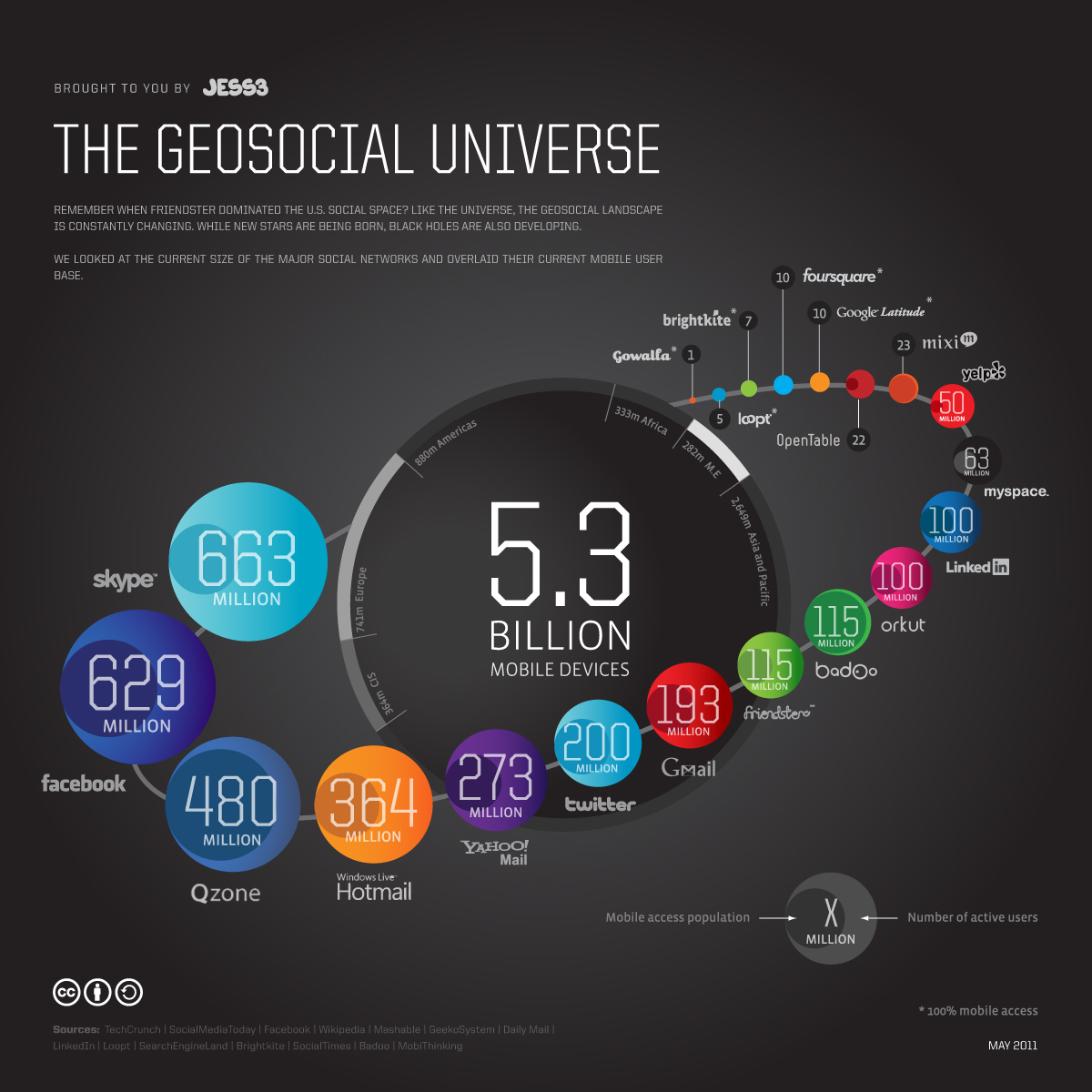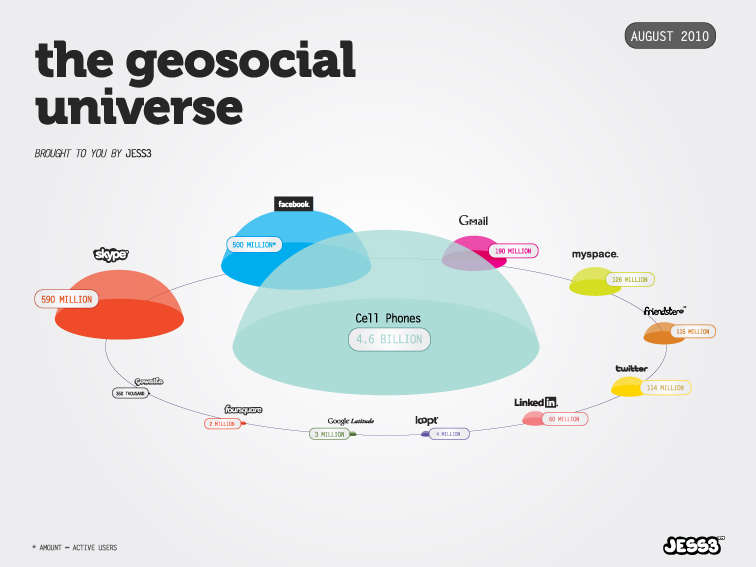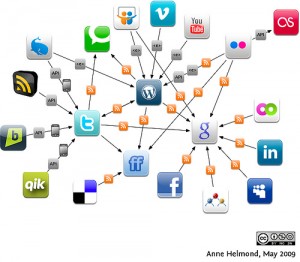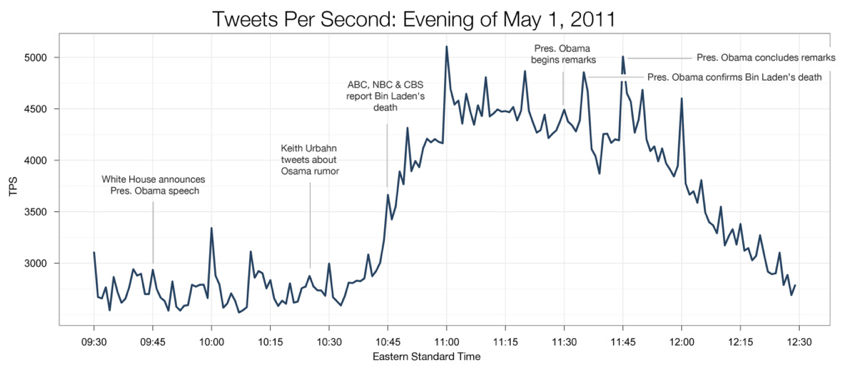Since the Big-Bang of the cyber world, internet becoming public during 90’s, the cyber universe expanding with increasing growth rate. The infographic by JESS3 agency visualizes the status of the current social networks and points to the emergence of new social platforms such as friendster, badoo, besides the well known titans such as Facebook, Skype, Twitter.
Especially, if we compare the data to the 2010 version of the info-graphic, very interesting points show up:
- We see that Skype with 663 million users, is ahead of Facebook in the registered user count. That is an important rationale behind Microsoft’s acquisition of Skype. However, we have to note that Facebook with more than 500 million active users, is still ahead vs Skype with about 180 million active users in terms of active usage. In this regards, we can still clearly say, that Facebook is the biggest active social network.
- In webmail networks, we see Hotmail leading followed by Yahoo and Gmail.
- Myspace appears to have passed the point of no return. With a steady decline, it’s gonna be hard for the company for sale to find a new buyer.
- Twitter is growing rapidly.
- The “made in china” version of Facebook, Qzone, is soon to reach its original.
- Some mobile device oriented location based services networks are still the smaller links of the socio-cyber universe, but Google Latitude and Foursquare show some remarkable growth.
- The mobile device market is continuing the exponential growth, the increase is in billion levels




